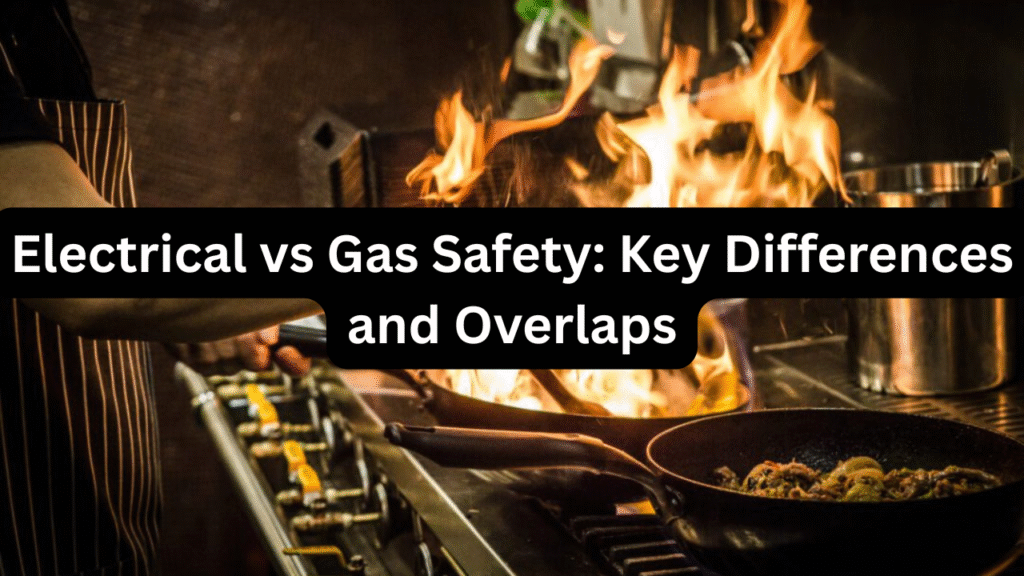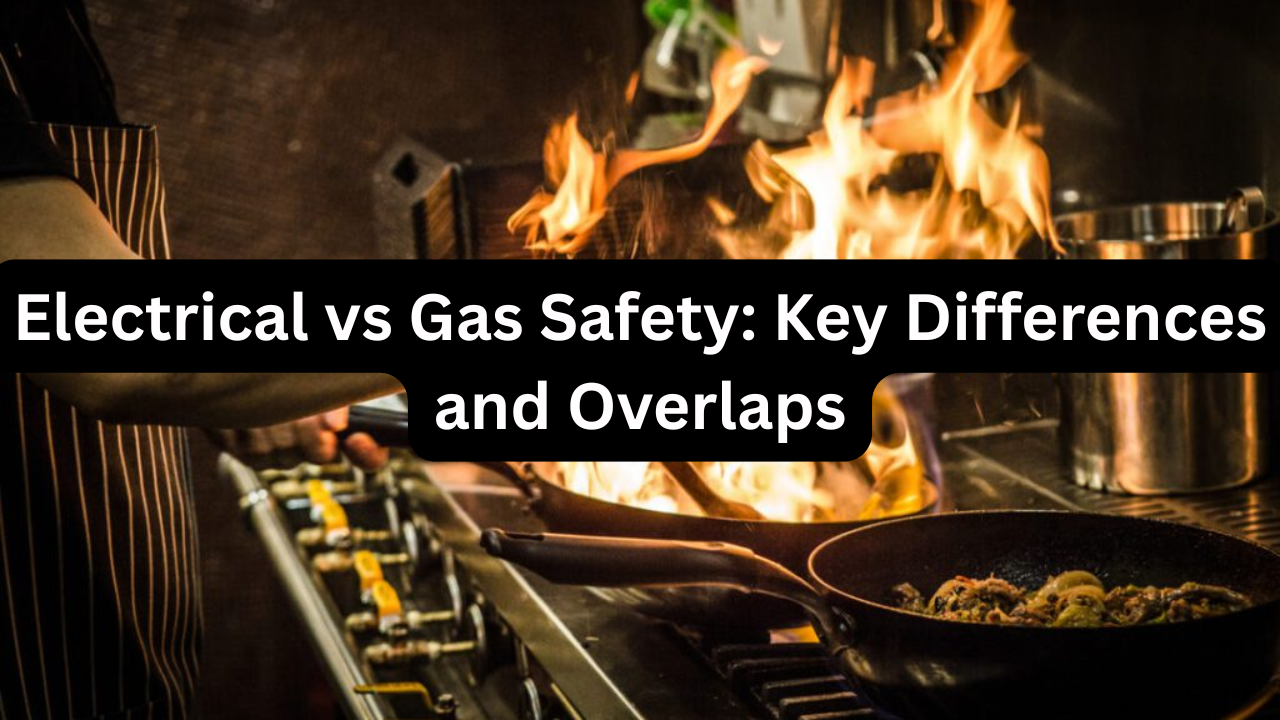
Both electricity and gas power modern homes, but each comes with its own safety challenges. While the hazards may differ — from electric shocks to gas leaks — the underlying principle is the same: prevention is better than cure. Understanding the unique risks, regulatory requirements, and overlapping safety practices can help homeowners maintain a secure living environment.
Why Compare Electrical and Gas Safety?
- Different hazards — Electric systems can shock, burn, or cause fires; gas systems can leak, explode, or release toxic fumes.
- Different regulations — Both have strict codes, but the standards and inspection requirements vary.
- Similar maintenance needs — Regular inspections, professional installation, and emergency readiness apply to both.
By learning the differences and similarities, you can ensure neither system becomes a hidden danger in your home.
Key Differences Between Electrical and Gas Safety
| Aspect | Electrical Safety | Gas Safety |
|---|---|---|
| Primary Risk | Electric shock, short circuits, electrical fires | Gas leaks, explosions, carbon monoxide poisoning |
| Main Source | Electrical wiring, outlets, appliances | Gas pipelines, burners, heaters, stoves |
| Detection | Circuit breakers, GFCI outlets, visual inspection | Gas detectors, CO alarms, smell (natural gas odorant) |
| Inspection Frequency | Every 5–10 years (home wiring), annually for appliances | Annual inspections for all appliances and pipelines |
| Emergency Action | Shut off main breaker, call electrician | Turn off gas valve, ventilate, call gas company |
| Regulations | Electrical code compliance | Gas safety regulations and building codes |
Overlaps in Safety Measures
While the hazards are different, electrical and gas safety share some essential practices:
- Professional Installation Only
Both require licensed professionals for installation and repairs to ensure compliance with safety codes. - Regular Maintenance
Yearly checks help prevent failures and detect hidden dangers early. - Adequate Ventilation
Gas appliances need ventilation to avoid carbon monoxide buildup; electrical systems need clear space to prevent overheating. - Emergency Preparedness
Both require accessible shut-off points and clear instructions for household members. - Use of Detectors
CO alarms for gas, smoke detectors for both systems, and in some cases combined alarm units.
Electrical Safety Essentials
- Circuit Protection Devices — Circuit breakers and ground fault circuit interrupters (GFCIs) reduce shock and fire risks.
- Proper Load Management — Avoid overloading outlets and circuits.
- Quality Wiring — Replace old, frayed, or undersized wiring.
- Dry Environments — Keep electrical equipment away from water to prevent shocks.
- Regular Inspections — Especially in older homes or after renovations.
Gas Safety Essentials
- CO and Gas Leak Detectors — Install and test regularly.
- No DIY Repairs — Even small gas work requires a certified technician.
- Appliance Ventilation — Ensure flues and vents are unblocked.
- Leak Awareness — Recognize the smell of gas (odorant added for safety).
- Shut-Off Valve Knowledge — Every occupant should know where and how to turn off the gas supply.
Key Overlap Areas: Joint Safety Practices
| Shared Safety Area | Electrical Aspect | Gas Aspect |
|---|---|---|
| Professional Service | Licensed electrician for wiring | Licensed gas fitter for pipelines/appliances |
| Annual Checks | Test appliances and breaker panels | Inspect burners, pipelines, and ventilation systems |
| Detector Use | Smoke detectors and GFCIs | CO and gas leak detectors |
| Emergency Response | Shut off breaker, evacuate if needed | Shut off valve, ventilate, evacuate if needed |
| Clear Access Points | Keep breaker box accessible | Keep gas shut-off valve accessible |
Regulatory Differences
- Electrical Safety Regulations
Governed by national or regional electrical codes (e.g., NEC in the U.S., IEC standards internationally). These focus on wiring methods, breaker sizing, grounding, and overload protection. - Gas Safety Regulations
Governed by building codes and gas safety acts, focusing on leak prevention, ventilation, appliance certification, and safe installation methods.
Failure to comply with either can result in fines, insurance claim denial, or increased accident risk.
Preventive Maintenance Checklist
| Task | Electrical | Gas | Frequency |
|---|---|---|---|
| Professional inspection | Yes, every 5–10 years | Yes, annually | Varies by code |
| Detector testing | Smoke and GFCI monthly | CO and gas leak monthly | Monthly |
| Shut-off check | Breaker accessibility every 6 months | Gas valve accessibility every 6 months | Semi-annual |
| Appliance cleaning | Remove dust from vents and fans | Clean burners and flues | Annual |
| Emergency drills | Practice breaker shut-off | Practice gas valve shut-off | Annual |
Emergency Response: Side-by-Side
- Electrical Emergency
- Turn off main breaker.
- Avoid touching the source of shock.
- Call an electrician or emergency services.
- Gas Emergency
- Turn off gas at shut-off valve.
- Ventilate by opening windows and doors.
- Leave the property and call the gas company.
Conclusion
Electrical and gas systems are the lifelines of a modern home — but both carry risks that demand attention. While the nature of hazards differs, the core safety principles remain the same: professional installation, regular inspections, proper ventilation, and emergency readiness. By understanding both their differences and overlaps, you can create a home that’s both functional and safe.
3 One-Line FAQs
Q1: Is gas safety more important than electrical safety?
A1: Both are equally important, as each poses life-threatening risks if neglected.
Q2: Can one professional handle both gas and electrical inspections?
A2: Usually no — each requires a certified specialist in their field.
Q3: Are CO detectors needed if I have no gas appliances?
A3: Yes, CO can also come from wood-burning stoves, fireplaces, and attached garages.

